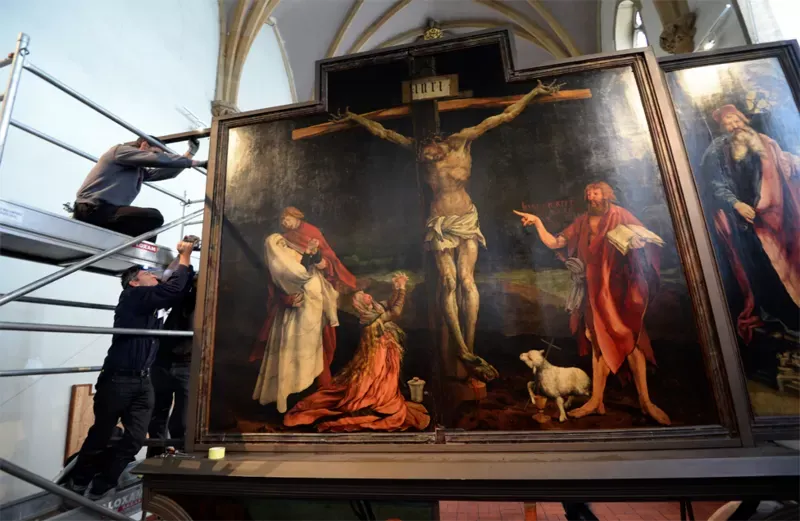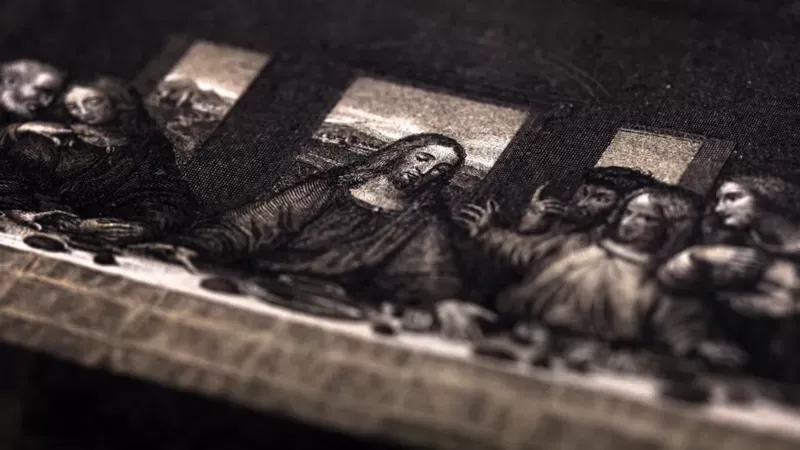After centuries and centuries of Eurocentrism—both in art and in religion—the best-known image of Jesus settled down: a white, bearded man with long light brown hair and blue eyes.
Despite being a portrait already known by most of the nearly 2,000 million Christians in the world, it is a recreation that must have had little to do with reality.
LOOK: Easter: why do the dates change every year? (and how Christian and Jewish Passover differ)
The historical Jesus, experts point out, was most likely dark-haired, short, and kept his hair trimmed, like the other Jews of his time.
The difficulty in knowing what Jesus looked like comes from the very origin of Christianity: the New Testament, the part of the Bible that narrates the life of Jesus, does not make any description of his appearance.
“The gospels don’t describe him physically, they don’t say if he was tall or short, handsome or strong. The only thing they say is the approximate age of him, about 30 years old, ”says New Zealand historian Joan E. Taylor, author of the new book What Did Jesus Look Like?(“What did Jesus look like?”) and Professor in the Department of Theology and Religious Studies at King’s College London, UK.
“This lack of data is very significant. It seems to indicate that the first followers of Jesus did not care about such information, that for them it was more important to record the ideas than to say how he was physically”, says historian André Leonardo Chevitarese, professor at the Institute of History of the Federal University of Rio de Janeiro. Janeiro and author of the book “Jesús Histórico. A brief introduction”.
In 2001, for a documentary produced by the BBC, British forensic facial reconstruction expert Richard Neave used his scientific knowledge to achieve a close-to-reality image.
Starting from three 1st-century skulls of ancient inhabitants of the same region where Jesus would have lived, he and his team recreated, using 3D modeling, a typical face that could very well have been that of Jesus.
The skeletons of Jews from that time show that the average height was 1.60 m and that the vast majority of men weighed just over 50 kilos.

Aylor, author of the new book, reached similar conclusions about the physiognomy of Jesus.
“Jews at the time were biologically similar to Iraqi Jews today, so I think (Jesus) had dark brown to black hair, brown eyes, brown skin, a typical Middle Eastern man,” he says.
Brown and long hair
Brazilian graphic designer Cícero Moraes, a specialist in forensic facial reconstruction, created a scientific image of Jesus Christ at the request of BBC Brazil.
Moraes comments that “(Jesus) was certainly dark, considering the complexion of people from that region and, mainly, analyzing the physiognomy of men from the desert, people who live under the intense sun”.
Another interesting question is the hair of Jesus.
In the Epistle to the Corinthians (one of the books of the Bible), the apostle Paul writes that “it is a dishonor for a man to have long hair”, so Jesus would not have had long hair, as is usually portrayed.
“For the Roman world, the acceptable appearance for a man was a shaven beard and short hair. Though in ancient times, philosophers probably grew long beards,” says historian Joan Taylor.

Professor Leonardo Chevitarese, author of the book “Historic Jesus. A very brief introduction”, says that the first known iconographies of Jesus, dating from the third century, show him as a beardless young man with short hair.
“He seemed more like a young philosopher, a professor, than a bearded god”details.
The researcher Wilma Steagall, professor at the Pontifical Catholic University of Sao Paulo and member of the Brazilian Society of Theology and Religious Sciences, points out that “at the center of Paleo-Christian iconography, Christ appears in various representations: with a beard, as a philosopher or teacher; or beardless, with an Apollonian face, with a tunic, with the countenance of the sun god or of a humble shepherd”.
divine figure
Taylor, the author of the new book, believes that the images that have been used throughout the centuries have always tried to portray the Christ, that is, the divine figure, the son of God, and not the human Jesus.
“That is an issue that has always fascinated me, I obviously wanted to see Jesus,” he says.

The representation of the bearded and hairy Jesus emerged in the Middle Ages, during the height of the Byzantine empire.
As Professor Chevitaese recalls, the figure of Christ began to show an invincible being, physically similar to the kings and emperors of the time.
Sociologist Francisco Borba Ribeiro Neto, coordinator of the Nucleus of Faith and Culture of the Pontifical Catholic University of Sao Paulo, says that “throughout history, artistic representations of Jesus and his face have rarely bothered to present the human being concrete that inhabited Palestine at the beginning of the Christian era.
“In the Catholic churches of the East, the image of Christ must follow a series of rules so that it transmits that other perception of the character’s reality. For example, he carries his head high, with wrinkles between his eyes that suggest wisdom and the ability to see beyond the material world”, adds Ribeiro Neto.
“In the scenes with several people he always looks bigger, which indicates his superiority over the normal human being; and on the cross he is represented alive and in glory, suggesting his resurrection”, he recounts.

Since the Western Church did not follow such norms, the artists who represented Christ throughout the centuries created him in their own way.
“It can be a sweet figure in many baroque images or a suffering and martyred Christ as in the works of Caravaggio or Goya,” says sociologist Ribeiro Neto.
“The problem of faithful representation of the historical character is a question of our time, when critical reflection showed the forms of cultural domination in artistic representations”, continues the sociologist.
“In that sense, the problem is not having a blond, blue-eyed Christ. The problem is that it is thought that the divinity should be presented with European factions because they represent those who are at the top of the ‘social scale,’” laments Ribeiro Neto.
This distance between the “European” Jesus and the new faithful from distant countries, according to the historian Chevitarese, was reduced in the search for a much more intermediate representation, an “ethnic Jesus”.
“Images of Jesus in Macao, the former Portuguese colony in China, show him with slanted eyes, dressed like a Chinese. In Ethiopia, there are records of a Jesus with black features,” he adds.
*This note was originally published on March 30, 2018
Source: Elcomercio

:quality(75)/cloudfront-us-east-1.images.arcpublishing.com/elcomercio/N62G7BRN3RAIDAX6P2YOESXLOQ.webp)

:quality(75)/cloudfront-us-east-1.images.arcpublishing.com/elcomercio/OF7CZLR4FRHKNNDNA4M5SSJXZI.jpg)
:quality(75)/cloudfront-us-east-1.images.arcpublishing.com/elcomercio/GI2TANBNGAZC2MRVKQYDAORSGU.jpg)
:quality(75)/cloudfront-us-east-1.images.arcpublishing.com/elcomercio/RGZAKVK3DBGRPO3BYAJAAMXAPQ.jpg)
:quality(75)/cloudfront-us-east-1.images.arcpublishing.com/elcomercio/QYNU54WBKVDOFJHWGWT3TUMFXU.jpg)
